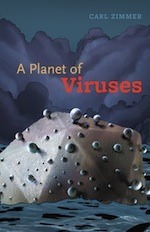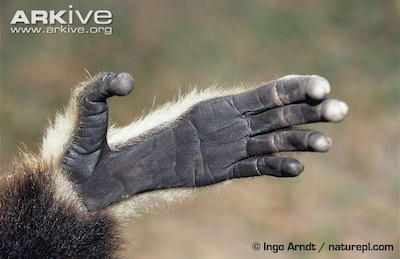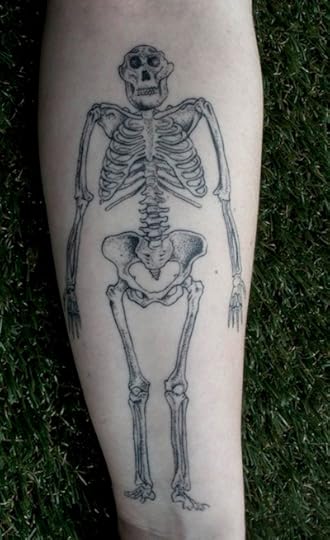Carl Zimmer's Blog, page 44
May 11, 2012
Cancer evolution at TEDMED
Earlier this year, TEDMED took place in Washington DC, showcasing people doing innovative research in medicine. This year’s talks are now being loaded online, and today I was happy to see that cancer and evolution got their due. Franziska Michor of Harvard explained how the threat of cancer is a legacy of our evolution into multicellular animals, and how every case of cancer is a miniature unfolding of evolution within our own bodies. What makes Michor’s work particular exciting is that she is bringing the mathematical precision of population genetics and other aspects of evolution to the treatment of cancer.
I wrote about some of Michor’s work in my 2007 Scientific American article, “Evolved for Cancer?” (carlzimmer.com, sciam.com) I’ve also explored cancer evolution here on the Loom: “Inside Darwin’s Tumor” and “The Mere Existence of Whales.” And you can find lots of Michor’s papers as free pdf’s on her publication page.

May 10, 2012
You ask for signed bookplates, you get signed bookplates
At some of my recent talks, I’ve been running into people who’ve been annoyed that they forgot to bring a book of mine to get signed. You really couldn’t think of a better way to cheer up a writer, and so I feel the need to reciprocate.
So if you’ve gotten a book of mine and want to get it signed, I’ve printed up some bookplates that I can autograph and send to you.
Just to ensure I’m not signing bookplates for alien robots who will take these bookplates to their home planet to…do whatever evil thing alien robots do with bookplates from science writers…please follow these steps:
1. Take your picture with the book.
2. Email it to me, with your mailing address and any special signing request. As in, “To Ken Ham, so that someday he may appreciate transitional fossils….”
Optional step 3. For those on Twitter: instead of emailing me your photo, you can upload it to Twitter (mentioning my Twitter name @carlzimmer). Be sure to email me your address, too, so that I know where to send the bookplate.
So far, I’ve got three bookplates–one for Parasite Rex, one for Science Ink (in matching Goth type), and one for Planet ...

May 9, 2012
Next Thursday: author Florence Williams and me at McNally Jackson in New York
Gothamites: please join Florence Williams and myself at the bookstore McNally Jackson in New York on Thursday May 17. Williams is the author of the new book, Breasts: A Natural and Unnatural History, a smart, wry synthesis of evolution, physiology, microbiology, environmental science, and even biomechanics.
Where: McNally Jackson, 52 Prince St., New York, NY (Phone: 212.274.1160)
When: May 17, 7 pm.
More details are here.

May 8, 2012
The Guardian reviews A Planet of Viruses: “Fascinating and enlightening”

Today the Guardian reviews A Planet of Viruses:
Viruses are everywhere: scientists have found them under Antarctic ice; they lurk inside your lungs which until recently were believed to be sterile; and seawater, which was once thought to contain very few, has now been found to be teeming with viruses. In fact, they outnumber all other residents of the ocean by 15 to 1. Even the human genome contains genes that came from viruses which infected our ancestors some 30m years ago, an idea that Zimmer describes as “almost philosophical in its weirdness.” In this succinct yet elegantly written survey, he explores the vital role viruses play in the evolution of life on Earth and how scientists have begun to reveal their often deadly secrets. Smallpox – the only human virus to have been eradicated – killed an astonishing 500m people every century in Europe between 1400 and 1800. From the common cold, first described 3,500 years ago by the Egyptians, to a new type of giant virus discovered in a Bradford water-cooler that mimics bacteria, this book is a fascinating and enlightening introduction.
May 7, 2012
How frogs climbed up into the Lost World: My story in tomorrow’s New York Times
 The tepuis of northern South America–tabletop mountains ringed by sheer cliffs rising up thousands of feet–inspired Sir Arthur Conan Doyle’s novel The Lost World. Doyle envisioned dinosaurs and other primordial creatures surviving on these remote islands in the sky.
The tepuis of northern South America–tabletop mountains ringed by sheer cliffs rising up thousands of feet–inspired Sir Arthur Conan Doyle’s novel The Lost World. Doyle envisioned dinosaurs and other primordial creatures surviving on these remote islands in the sky.
It turns out that the tepuis are indeed ancient vestiges. The surrounding land eroded away 70 million years ago. Biologists have kibg been fascinated by the plants and animals that live on top of them today. In many cases, the species on a tepui are found nowhere else on Earth. Many have argued for the wonderfully-named “Lost World Hypothesis”–the unique species of the tepuis been stranded up there for 70 million years.
In tomorrow’s New York Times, I report on a team of scientists who tested that hypothesis by looking at the DNA of frogs that live on tepuis. And for them, at least, the hypothesis fails. Somehow, those tiny frogs managed to scale walls that strike fear in even the toughest rock climbers. For the full details, check out the story.
Image by Xyrenita on Flickr/via Creative Commons

The stories doctors tell, Noah’s flood, and more: two interviews on writing about science
I recently sat down for two stimulating conversations which are now in print. One was with Ben Lillie for Story Collider, the new magazine that Lillie has launched to complement his wonderful storytelling series. The other was with Ben Goldfarb of Sage, a student-run environmental arts and journalism publication of the Yale University School of Forestry & Environmental Studies. Ben L. and Ben G. asked lots of thoughtful questions about the art of science writing, and the place of the science writer in society. It’s a little painful to read my ramblings taken down verbatim–I want to reach out and edit away the extra verbiage–but you may still find them interesting.

May 6, 2012
In Memory of Lucy #scienceink
Please find attached a photo of my Australopithecus tattoo. I’m a medical anthropologist researching the historical relationship between school meals and obesity in children as part of my PhD at Durham University. Obviously this has very little to do with Australopithecus but my interest in “Lucy” began when I started my UG degree in Anthropology here at Durham. One of my first lectures was on our Biological and Social Origins and we learnt about our evolutionary heritage. Lucy caught my eye because she was one of the most complete finds of this species at that time. Also as it was thought that she was more closely related to Homo genus than any other Australopithecus at that time.
I found it fascinating that from her remains we could postulate that she was bipedal and from her pelvis we could deduce that she would have gave birth to a larger brained infant than previous species. We can further postulate that her infant care practices would be more similar to our own, larger brained infant would have to complete their growth outside the womb and would require ...

May 4, 2012
Join Ed Yong and me for a transatlantic talk about killer flu, feathery dinosaurs, and every living thing in between
 Ed Yong and I may live on either side of the Atlantic, but our minds are in the same place: that strange realm where fungi take over the minds of ants, where dinosaurs sprout feathers, and where ducks shatter glass with their genitals. In other words, Earth.
Ed Yong and I may live on either side of the Atlantic, but our minds are in the same place: that strange realm where fungi take over the minds of ants, where dinosaurs sprout feathers, and where ducks shatter glass with their genitals. In other words, Earth.
We don’t get to see each other in person more than once a year, if that, but we always have a good time when we do. Which is why I’m looking forward to having an online conversation with Ed on May 14. And you’re invited.
This event is brought to you by Shindig, a new company that’s set up a web site for video chat events. The design of the site is quite elegant: the speakers appear on the top of the event page, where everyone can watch them talk. Audience members appear in their own screens on the page as well, and when speakers ask for questions, they can hit a “raise hand” button. The audience member asking a question then zooms up to the top of the screen, where he or she can have a conversation with the speaker. (You’ll obviously ...

May 2, 2012
Behold The Forbidden Flu: A Loom Explainer
 Here, for your viewing pleasure, is a very important part of a very special flu virus. It may look like an ordinary protein, but in fact it’s been at the center of a blazing debate about whether our increasing power to experiment on life could lead to a disaster. Not that long ago, in fact, a national security advisory board didn’t even want you to see this. So feast your eyes.
Here, for your viewing pleasure, is a very important part of a very special flu virus. It may look like an ordinary protein, but in fact it’s been at the center of a blazing debate about whether our increasing power to experiment on life could lead to a disaster. Not that long ago, in fact, a national security advisory board didn’t even want you to see this. So feast your eyes.
For those who are new to this story let me start back at the beginning, in 1997.
In that year, a child in Hong Kong died of the flu. Doctors shipped a sample of his blood to virus experts in Europe, but they didn’t bother taking a look at it for months. When they did, they were startled to discover that it was unlike any flu they’d seen in a human being before.
Each year, several different flu strains circulate from person to person around the world. They’re known by the initials of the proteins that cover their surface–H3N2, for example, is one common strain. The H stands for haemagglutinin, a protein that latches to a host cell so that the ...

April 27, 2012
A Multitude of Hands: My new essay for National Geographic
 In the May issue of National Geographic, I contemplate the hand. Human hands are unique and versatile–and yet we are far from the only animals with them. By looking at the variety of hands in nature, we can see some of the most striking evidence of how evolution tinkers in all sorts of unexpected way. Check it out.
In the May issue of National Geographic, I contemplate the hand. Human hands are unique and versatile–and yet we are far from the only animals with them. By looking at the variety of hands in nature, we can see some of the most striking evidence of how evolution tinkers in all sorts of unexpected way. Check it out.
The print version is accompanied by lovely sketches of a wide range of hands. If you read the story online, you can see an animation of the human hand. And if you have the National Geographic iPad app, you can see videos of other hands, from frogs to aye-ayes.
[Image: White -handed gibbon by Ingo Arndt, on Arkive.]























